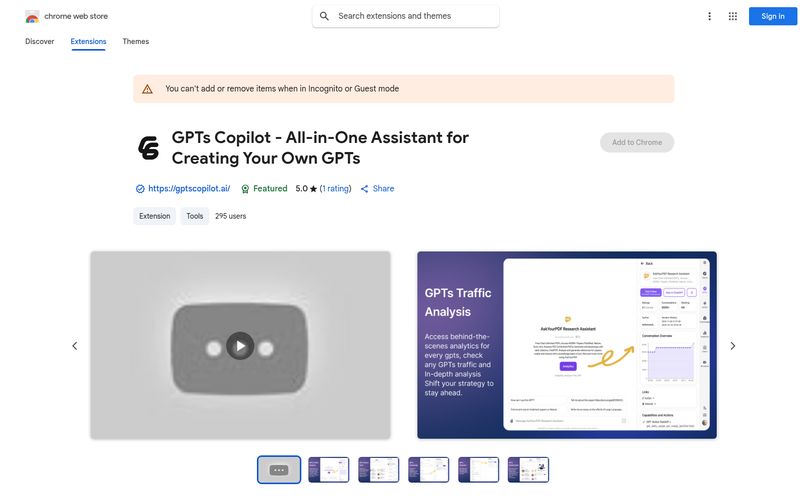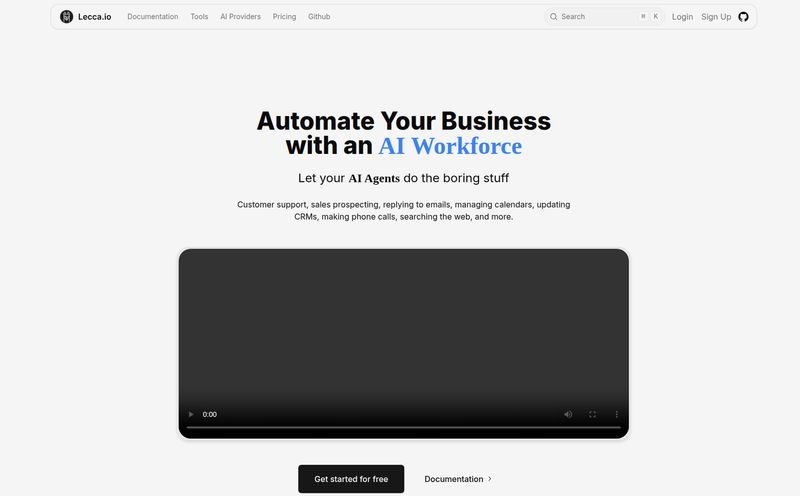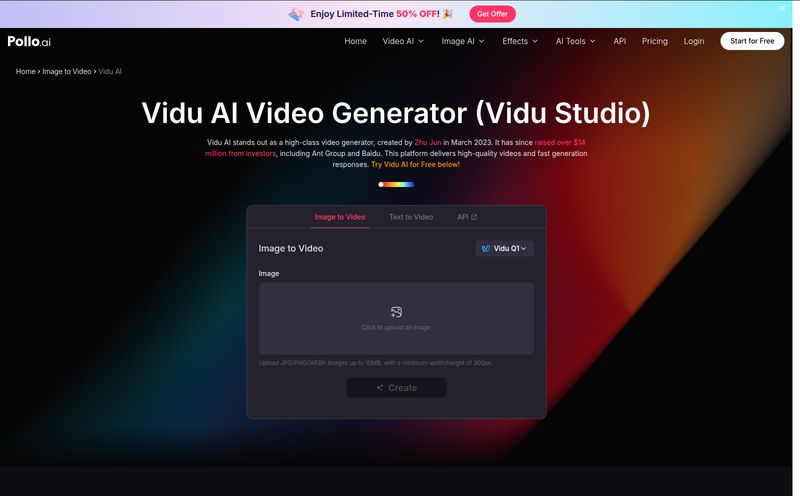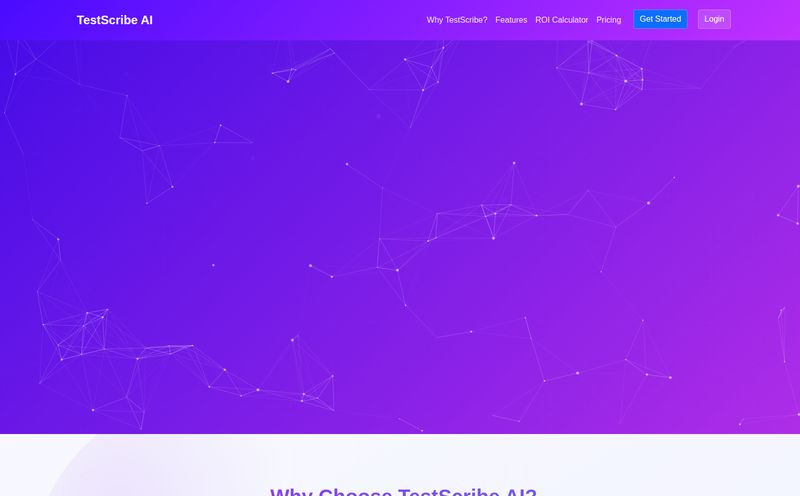If you’ve ever tried to run web scraping or browser automation at any kind of scale, you know the pain. You start with a simple Playwright or Puppeteer script on your machine. It works! Huzzah! Then you try to run ten scripts at once. Your IP gets flagged. Then you hit a CAPTCHA. Then Chrome updates and your ChromeDriver is suddenly obsolete. Before you know it, you're not a developer anymore; you’re an unwilling, unpaid, and very stressed-out sysadmin for a fleet of janky virtual browsers.
I've been there. I’ve spent weekends wrestling with Docker containers, proxy rotation services, and user-agent strings, all just to reliably pull some data from a website. It’s a nightmare. So when I started hearing the buzz about Browserbase, a platform that claims to handle all of that mess for you, my ears perked up. They call themselves “A web browser for your AI,” and honestly, that’s a pretty good description of what the future of automation looks like.
But is it just another fancy wrapper, or is it the real deal? Let's get into it.
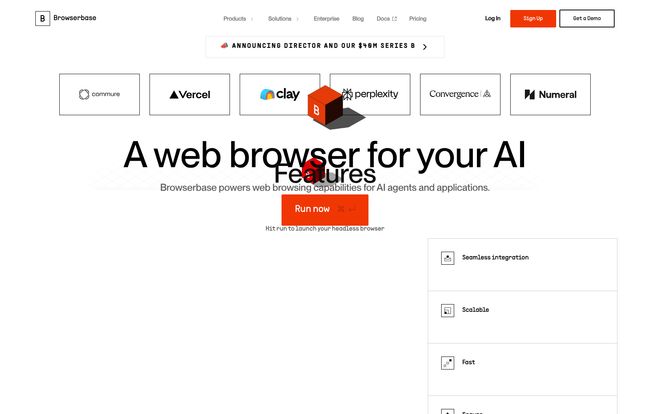
Visit Browserbase
So, What Exactly Is Browserbase?
Let's clear one thing up first: Browserbase isn't a browser you'll be installing on your desktop to watch YouTube. Think of it less like Chrome and more like AWS for Chrome. It's an infrastructure platform designed to run, manage, and monitor headless browsers for your applications. Your code makes an API call, and Browserbase spins up a secure, pre-configured browser instance somewhere in the cloud to do your bidding.
This is a game-changer for a few key areas:
- AI Agents: The new wave of AI agents needs to interact with the web to perform tasks. Browserbase gives them a reliable way to do that without getting blocked. It's no wonder companies like Perplexity are on their customer list.
- Web Scraping: This is the obvious one. It handles the difficult parts of scraping, like proxies and avoiding detection, so you can focus on just getting the data you need.
- Workflow Automation: Need to automate tasks on a website that doesn't have an API? Browserbase can drive the user interface for you, reliably and at scale.
The best part for developers? It’s designed to slot right into your existing workflow. It’s compatible with the big names in browser automation—Playwright, Puppeteer, Selenium, and even their own open-source framework, Stagehand. You don’t have to learn a whole new proprietary language; you just point your existing scripts at the Browserbase API.
The Core Features That Actually Matter
Any platform can throw a list of features on a landing page. But as someone who's been in the trenches of CPC and traffic gen for years, I'm more interested in the features that solve real, nagging problems. Here's what caught my eye.
Built for Scale, Not for Headaches
The main promise here is scalability. Running one headless browser is easy. Running a thousand is a complex orchestration of servers, load balancers and network management. Browserbase abstracts all that away. You need more browsers? You just make more API calls. They handle the underlying infrastructure. This is the classic “build vs. buy” scenario, and for most teams, building this kind of thing in-house is a massive, expensive distraction.
The "Stealth Mode" Every Scraper Dreams Of
Okay, this is huge. One of the biggest arms races in web scraping is avoiding bot detection. Websites are getting smarter every day. Browserbase comes with a “Stealth Mode” that includes features to make your headless browsers appear more human. This includes things like managing browser fingerprints and rotating through their proxy supernetwork. They even have automatic CAPTCHA solving. It’s not magic, but it's a massive leg up against getting your operations shut down.
A Developer-First Experience (For Real)
I’m always skeptical of the “developer-first” marketing tag, but the evidence here is strong. The documentation is clean, and the social proof—a literal wall of “Developer Love” on their site—shows they're hitting the right notes. One feature I particularly love is the Live View iFrame. It lets you get a real-time view of what the browser is doing, which is an absolute lifesaver for debugging. No more guessing why your script is failing; you can just watch it happen.
"I just started using this and it's unreal. Combined with live debug urls, sheesh"
Security and Isolation by Default
Each browser session you run is in its own isolated environment. This is critical. It means no data leakage between sessions, no pesky cookies from one run affecting the next, and a generally more secure and stable process. If you’re automating tasks on behalf of users or handling sensitive information, this isn't just a nice-to-have, it's a requirement.
The Good, The Bad, and The Pricey
No tool is perfect, right? Let's get real about the pros and cons. The upsides are pretty clear: it’s powerful, it integrates easily, and it solves a very real, very annoying problem. It's reliable infrastructure built by people who clearly understand the space.
On the flip side, you're putting a core part of your application in the hands of a third-party service. If Browserbase has a bad day, you have a bad day. That's the nature of SaaS. The other consideration is cost. While it can save you a ton in engineering hours, the costs are usage-based and can scale up. If you're running millions of browser sessions a month, you'll want to be on their Custom plan to manage costs effectively. Finally, while they've made it easy, there's still a bit of a learning curve to get things configured just right, especially if you have complex requirements.
Let's Talk Money: Browserbase Pricing Explained
The pricing structure is a hybrid model that's pretty common in this space. You pay a monthly subscription for a certain tier, which includes a bundle of browser hours and features, and then pay for overages. It’s flexible, but you need to watch your usage.
| Plan | Price | Key Features |
|---|---|---|
| Free | $0 /month | 1 browser hour included, 1 active browser, 7-day data retention. Perfect for testing. |
| Hobby | $39 /month | 200 browser hours included, 3 concurrent browsers, Auto CAPTCHA Solving, Basic Stealth Mode. |
| Startup | $99 /month | 500 browser hours included, 50 concurrent browsers, 30-day data retention. |
| Scale | Custom | Volume discounts, premium support, Advanced Stealth Mode, HIPAA/SOC 2 compliance. |
Note: Overage costs for Hobby and Startup plans are typically around $0.10/browser hour and $10/GB for proxies. Always check the official Browserbase pricing page for the most current details.
So, Who Is Browserbase Actually For?
After digging in, it's pretty clear who wins with a tool like this. You're the ideal customer if you're a developer or a team that's building an AI-powered application that needs to browse the web, a data scientist doing large-scale web scraping for market research or a startup that wants to automate workflows without dedicating an entire engineer to maintaining a flaky Selenium Grid. If your core business isn't browser infrastructure, then it probably makes sense to outsource it to someone whose business is browser infrastructure.
Frequently Asked Questions (FAQ)
- Can I use Browserbase with my existing Selenium or Playwright scripts?
- Absolutely. Browserbase is designed for this. You essentially just change the connection endpoint in your existing code to point to Browserbase, and it should work with minimal changes.
- Does Browserbase handle CAPTCHAs for me?
- Yes, the paid plans include an auto CAPTCHA solving feature, which is a massive time and money saver compared to integrating with separate CAPTCHA-solving services.
- Is Browserbase just for AI agents?
- Not at all. While that's their main marketing angle, it's a powerful tool for anyone doing web scraping, automated testing, or any kind of browser-based workflow automation at scale.
- Can I see what the browser is doing in real-time?
- Yes! This is one of their standout features. The Live View iFrame gives you a live look into the browser session, which makes debugging so much easier than working blind.
- How does the "Stealth Mode" work?
- It's a collection of techniques to make the automated browser appear more like a real human user. This includes managing browser fingerprints, using residential proxies, and other methods to avoid being detected and blocked by websites.
The Final Verdict
Look, the internet is getting harder to automate. Browserbase isn't just a convenience; it feels like a necessary piece of the modern developer's toolkit. It takes a problem that is deceptively complex—running browsers at scale—and turns it into a simple API call.
It's one of those 'build vs. buy' decisions, and Browserbase makes a very, very compelling case for 'buy'. Instead of spending your time fighting with proxies and browser drivers, you can focus on building the actual product or getting the data you need. For me, that’s an easy trade. If you’re in this space, the free plan is a no-brainer to try out. It might just save you from your next infrastructure-induced headache.
